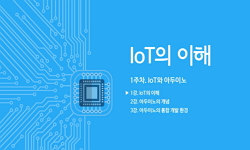The present research paper is devoted to solving an urgent problem, i.e., the energy saving and energy efficiency of buildings. A rapid settlement method and experimental control of the energy conservation based on the specific characteristics of the ...
http://chineseinput.net/에서 pinyin(병음)방식으로 중국어를 변환할 수 있습니다.
변환된 중국어를 복사하여 사용하시면 됩니다.
- 中文 을 입력하시려면 zhongwen을 입력하시고 space를누르시면됩니다.
- 北京 을 입력하시려면 beijing을 입력하시고 space를 누르시면 됩니다.
https://www.riss.kr/link?id=A102593138
- 저자
- 발행기관
- 학술지명
- 권호사항
-
발행연도
2016
-
작성언어
English
- 주제어
-
등재정보
KCI등재,SCOPUS,ESCI
-
자료형태
학술저널
- 발행기관 URL
-
수록면
254-261(8쪽)
-
KCI 피인용횟수
1
- 제공처
-
0
상세조회 -
0
다운로드
부가정보
다국어 초록 (Multilingual Abstract)
The present research paper is devoted to solving an urgent problem, i.e., the energy saving and energy efficiency of buildings. A rapid settlement method and experimental control of the energy conservation based on the specific characteristics of the thermal energy consumption for the heating and ventilation of the buildings, and as well as the rapid development of wireless sensor networks, can be used in a variety of monitoring parameters in our daily lives. Today’s world has become quite advanced with smart appliances and devices such as laptops, tablets, TVs, and smartphones with various functions, and their use has increased significantly in our day-to-day lives. In this case, the most important role is played by a wireless sensor network with its development and use in heterogeneous areas and in several different contexts. The fields of home automation, process management, and health management systems make extensive use of wireless sensor networks. In this paper, we explore the main factors of the microclimate in an indoor environment. We control the temperature humidity, and other factors remotely using sensors and Internet-of-Things technologies.
목차 (Table of Contents)
- Abstract
- 1. Introduction
- 2. Climate Control Organization
- 3. Architecture of the System
- 4. Calculations
- Abstract
- 1. Introduction
- 2. Climate Control Organization
- 3. Architecture of the System
- 4. Calculations
- 5. Conclusion
- References
참고문헌 (Reference)
1 J. Jaykumar, "Secure smart environment using IOT based on RFID" 5 (5): 2493-2496, 2014
2 Vimal Jerald, "Internet of Things (IoT) based Smart Environment integrating various Business Applications" Foundation of Computer Science 128 (128): 32-37, 2015
3 D. M. G. Preethichandra, "Design of a smart indoor air quality monitoring wireless sensor network for assisted living" 2013
4 Y. N. Hassan, "Demo:developing smart environments in the internet of things with the semantic IDE" 1-2, 2015
5 T. Yu, "An intelligent wireless sensing and control system to improve indoor air quality : monitoring, prediction, and preaction" 2015 (2015): 2015
6 Sherin Abraham, "A Cost-effective Wireless Sensor Network System for Indoor Air Quality Monitoring Applications" Elsevier BV 34 : 165-171, 2014
1 J. Jaykumar, "Secure smart environment using IOT based on RFID" 5 (5): 2493-2496, 2014
2 Vimal Jerald, "Internet of Things (IoT) based Smart Environment integrating various Business Applications" Foundation of Computer Science 128 (128): 32-37, 2015
3 D. M. G. Preethichandra, "Design of a smart indoor air quality monitoring wireless sensor network for assisted living" 2013
4 Y. N. Hassan, "Demo:developing smart environments in the internet of things with the semantic IDE" 1-2, 2015
5 T. Yu, "An intelligent wireless sensing and control system to improve indoor air quality : monitoring, prediction, and preaction" 2015 (2015): 2015
6 Sherin Abraham, "A Cost-effective Wireless Sensor Network System for Indoor Air Quality Monitoring Applications" Elsevier BV 34 : 165-171, 2014
동일학술지(권/호) 다른 논문
-
A Simple Method for Solving Type-2 and Type-4 Fuzzy Transportation Problems
- 한국지능시스템학회
- P. Senthil Kumar
- 2016
- KCI등재,SCOPUS,ESCI
-
- 한국지능시스템학회
- Ali Rohan
- 2016
- KCI등재,SCOPUS,ESCI
-
Multi-Level Segmentation of Infrared Images with Region of Interest Extraction
- 한국지능시스템학회
- Seokwon Yeom
- 2016
- KCI등재,SCOPUS,ESCI
-
Chaotic Behavior in Model with a Gaussian Function as External Force
- 한국지능시스템학회
- Linyun Huang
- 2016
- KCI등재,SCOPUS,ESCI
분석정보
인용정보 인용지수 설명보기
학술지 이력
| 연월일 | 이력구분 | 이력상세 | 등재구분 |
|---|---|---|---|
| 2023 | 평가예정 | 해외DB학술지평가 신청대상 (해외등재 학술지 평가) | |
| 2020-01-01 | 평가 | 등재학술지 유지 (해외등재 학술지 평가) |  |
| 2013-01-01 | 평가 | 등재 1차 FAIL (등재유지) |  |
| 2010-01-01 | 평가 | 등재학술지 유지 (등재유지) |  |
| 2008-02-18 | 학회명변경 | 한글명 : 한국퍼지및지능시스템학회 -> 한국지능시스템학회영문명 : Korea Fuzzy Logic And Intelligent Systems Society -> Korean Institute of Intelligent Systems |  |
| 2007-01-01 | 평가 | 등재학술지 선정 (등재후보2차) |  |
| 2006-01-01 | 평가 | 등재후보 1차 PASS (등재후보1차) |  |
| 2004-07-01 | 평가 | 등재후보학술지 선정 (신규평가) |  |
학술지 인용정보
| 기준연도 | WOS-KCI 통합IF(2년) | KCIF(2년) | KCIF(3년) |
|---|---|---|---|
| 2016 | 0.43 | 0.43 | 0.4 |
| KCIF(4년) | KCIF(5년) | 중심성지수(3년) | 즉시성지수 |
| 0.35 | 0.35 | 0.853 | 0.05 |






 DBpia
DBpia






